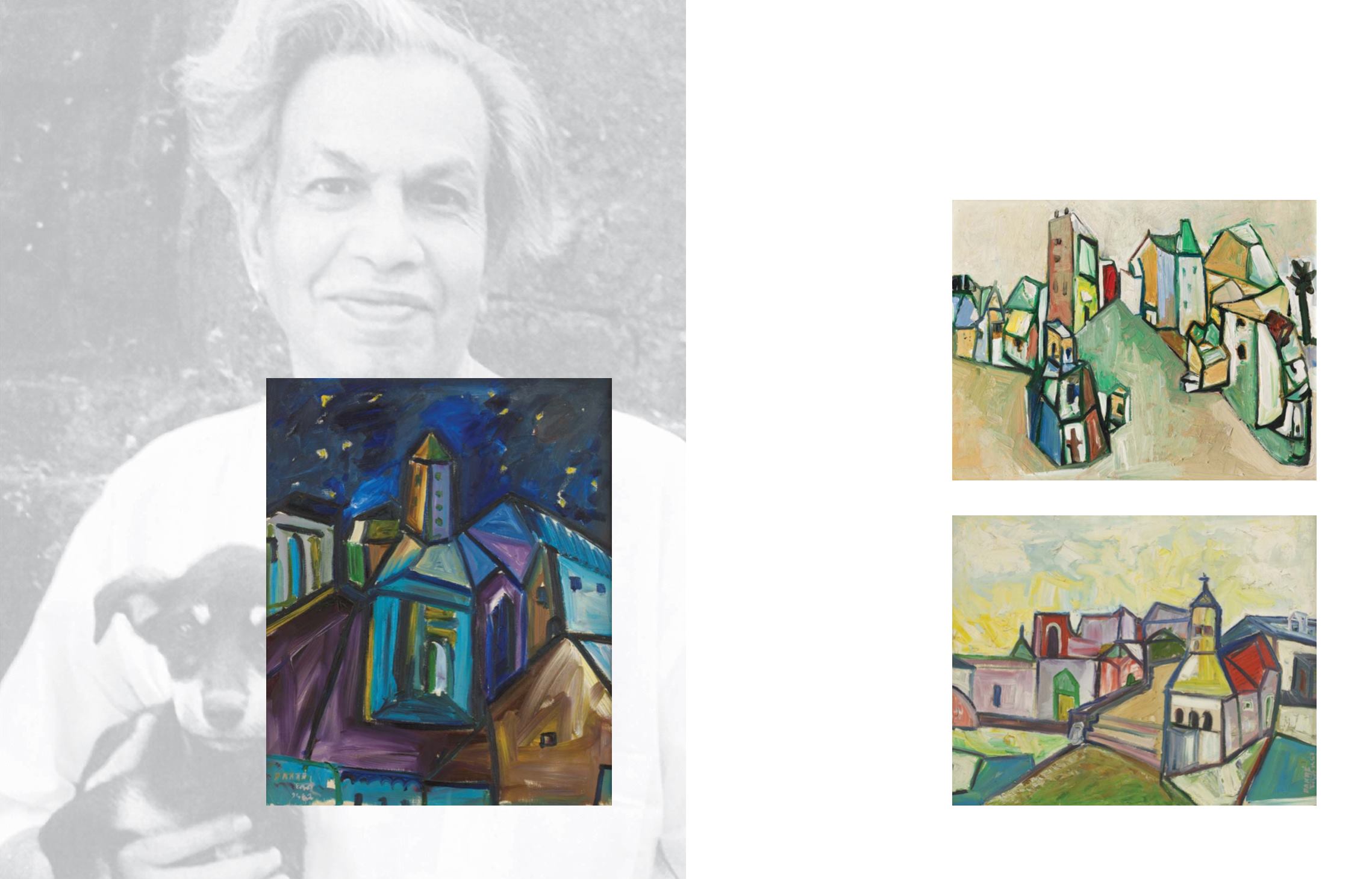

6
SADANAND BAKRE
(1920 ‒ 2007)
Untitled
Signed ‘Bakre’, signed again and dated
in Devnagari (lower left); inscribed ‘S. K.
BAKRE’ and signed and dated again in
Devnagari (on the reverse)
1962
Oil on canvas
21.75 x 17.5 in (55 x 44.7 cm)
Rs 2,00,000 ‒ 3,00,000
$ 2,990 ‒ 4,480
7
SADANAND BAKRE
(1920 ‒ 2007)
Untitled
Inscribed ‘S. K. BAKRE’ and signed and
dated in Devnagari (on the reverse)
1962
Oil on canvas
11.75 x 14.5 in (30 x 37 cm)
Rs 2,00,000 ‒ 3,00,000
$ 2,990 ‒ 4,480
PROVENANCE:
Collection of Mr. and Mrs. A Witherick
Private Collection, London
Private Collection, North India
8
SADANAND BAKRE
(1920 ‒ 2007)
Untitled
Signed ‘Bakre’, signed again and dated in
Devnagari (lower right); inscribed ‘S. K.
BAKRE’ and signed and dated again in
Devnagari (on the reverse)
1962
Oil on canvas
17.25 x 21.75 in (44 x 55 cm)
Rs 2,00,000 ‒ 3,00,000
$ 2,990 ‒ 4,480
PROVENANCE:
Acquired directly from the artist
Private Collection, Barcelona
Private Collection, North India
Born in 1920 in Baroda, Sadanand
Bakre was among the least known
of the members of the Progressive
Artists’ Group. He was a graduate of
the Sir J J School of Art in Mumbai,
where he studied sculpture. His
talent was recognised and he was
encouraged to excel in his art by
many, including the leading art critic
Rudy von Leyden, who introduced
him to the modernist movements
in America and Europe. Like many of
his generation, Bakre’s development
as an artist followed the trajectory
of moving from academic realism to
abstraction, in his paintings as well
as his sculptures.
The decade of the 1960s was one
which saw the evolution of Bakre’s
vocabulary and style. From “spiky
forms,” he had, by the late 60s,
moved to more simplified forms
and his interest in structure becomes
apparent, as seen in lots 6, 7 and 8.
Bright colours are balanced with
flat white planes that focus on the
architecture in the city or landscape.
Walls, domes, roofs and the land are
all composed with bold geometric
lines that suggest a cubist sensibility.
Bakre’s paintings and sculptures
were shown and appreciated
at several significant galleries
in Europe and Mumbai. After
time spent in Europe, the artist
eventually returned to India in
the 1980s and settled down in the
Konkan region of Maharashtra,
where he died in 2007.
SADANAND BAKRE
(1920‒2007)
6
7
8
Sadanand Bakre
Image courtesy of
artnewsnviews.comPROVENANCE:
Acquired directly from the artist
Private Collection, Barcelona
Private Collection, North India


















